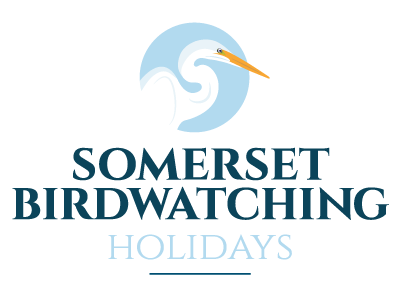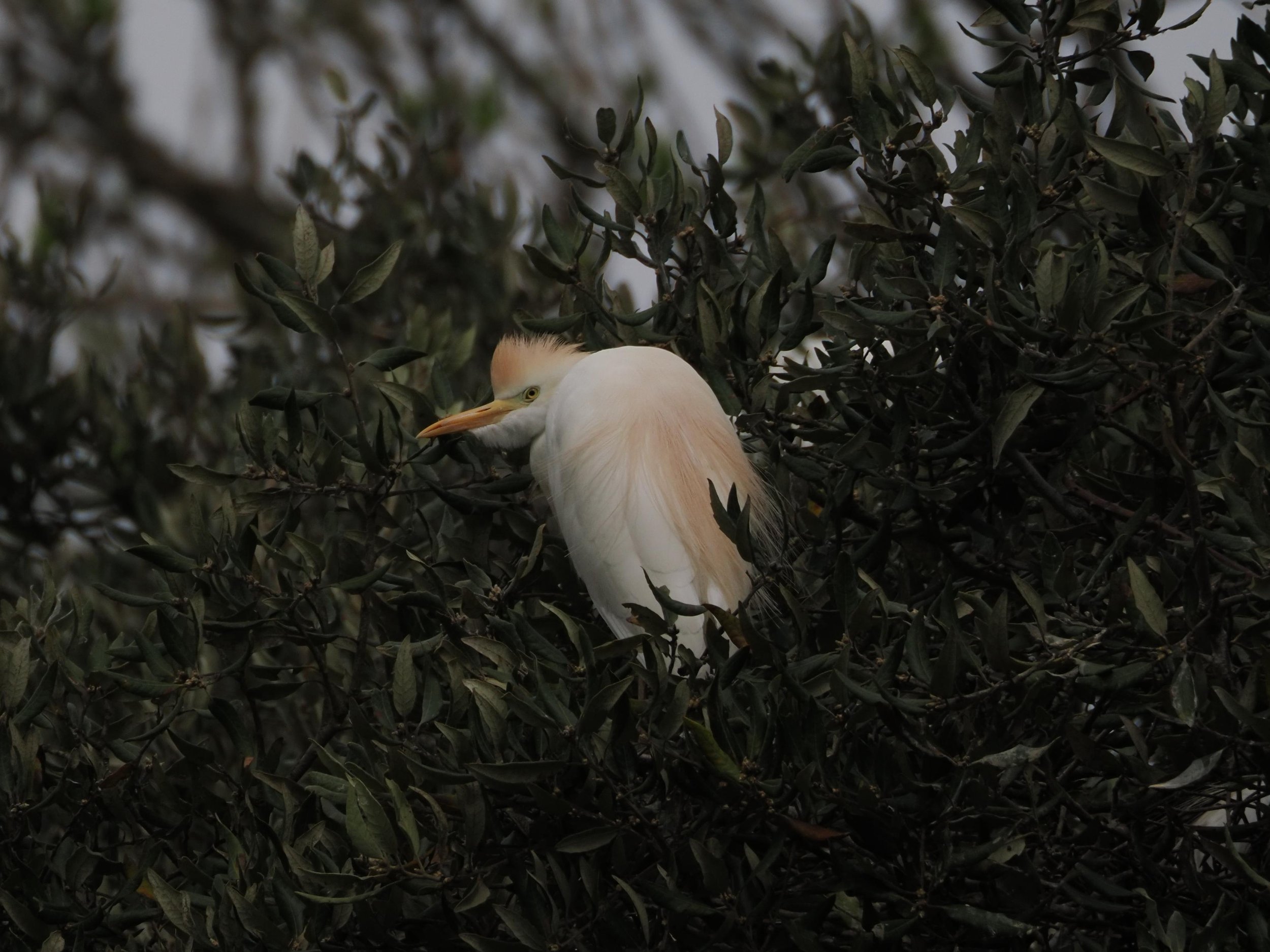Spring Birding 10th-13th May
SOMERSET BIRDWATCHING HOLIDAYS TRIP REPORT:
May 10th-13th 2023
Tour Leaders: Stephen Moss & Graeme Mitchell
Wednesday 10th May
It was a bright and breezy afternoon when we dropped down from the village of Blackford to Tealham Moor on the edge of the Somerset Levels. After torrential rain 24 hours earlier, the rough farm pastures were almost fluorescent green, with bright yellow flowers from the buttercups and rapeseed – while beautiful, this did not help matters when we began to look for our target bird, the Yellow Wagtail.
Skylarks rose from the fields and fluttered skywards until they were just a dot, then lost in the clouds. Bright Yellow Wagtails zipped past, in front and behind, moving so fast it was difficult to get good views. Little Egrets probed at the tussocks and Marsh Harriers patrolled the margins of the flooded fields. A ‘Channel wagtail’ – a rather odd but stunningly beautiful hybrid between the continental ‘Blue-headed’ and the English ‘Yellow’ races of the more familiar Yellow Wagtail – sat briefly on a gatepost near the van.
‘Channel’ Yellow Wagtail photo Roger Christopher
We then continued over the eastern end of the moors – now called Tadham Moor – where a Kestrel sat obligingly on top of a pole scanning below for voles and an elegant Great White Egret and Grey Heron stood like a couple of super-models in a ditch, known locally as rhynes (pronounced ‘reens’).
When we arrived at Somerset Wildlife Trust’s nature reserve at Westhay Moor, the blustery wind seemed to have dropped and an insect hatch was on. Swifts appeared in great numbers screeching over blue skies and before we had left the carpark, they had been joined by at least two Hobbies. By the time we had walked along the track to the reserve’s new thatched island hides there were between 8 and 12 Hobbies cruising high over the reedbeds like a fighter squadron, alongside the Swifts and several House Martins. Lower to the ground Reed Warblers chuntered hidden in the reeds, Water Rail squealed, and ducks came and went – mostly Mallard, and Gadwall with the occasional much smaller Teal.
Large and Small White and Orange-tip butterflies flitted through the dappled shade while Chiffchaffs and Willow Warblers sang in the birch scrub. On more open water a Great Crested Grebe looked very serene in the sunshine whilst a Gadwall dozed with its head under its wing.
In the fields that surround the reserve were both Canada and Greylag geese nibbling at the stubble.
Back at Walls Farm in the evening we were joined by Stephen where we discussed our plans for the next couple of days and enjoyed one of Kay’s wonderful suppers.
Thursday 11th May
We began day two again at Tealham Moor, where we were greeted by two Little Egrets, a distant male Marsh Harrier, a splendid male Whitethroat puffing out his bright white throat, singing Skylarks, a Meadow Pipit and male Reed Bunting; and best of all, really close views of the male ‘Channel wagtail’ seen yesterday.
We then headed over to RSPB Ham Wall, the centrepiece reserve on the Avalon marshes, to be greeted by our usual array of warblers: in rough order of seeing/hearing we got Chiffchaff, Blackcap, Garden, Cetti’s, Whitethroat, Reed, Willow (the latter seen really well at the top of a tree). From the first viewing platform we enjoyed good views of two Great White Egrets, a flock of Gadwall, Shoveler, Redshanks, Great Crested Grebe (one also seen earlier with four chicks), a sleeping drake Garganey spotted by Graeme, and – for the first year here – a breeding colony of Black-headed Gulls, causing the resident Lapwings some consternation!
We also enjoyed very good views of many spring insects: Orange-tip and Holly Blue butterflies, Hairy Dragonfly and lots of newly hatched damselflies. Many of these were seen while we waited – sadly in vain – for the Great Reed Warbler that has been here for a week or two now. On the way back we had excellent views of Garden Warblers, and while we enjoyed our coffee and biscuits in the car park a pair of Ravens flew over.
Before lunch we headed over the Polden Hills to Greylake RSPB. Fairly quiet here, but Sedge, Reed and Cetti’s Warblers as ever, a Great White Egret, Greylag Goose, Little Grebe and a Kestrel; following which we headed south to our favourite lunch stop, the King Alfred’s Inn, by the River Parrett at Burrowbridge.
After lunch we had a quick ‘culture and history’ diversion to Athelney, home to the King Alfred memorial, where we enjoyed close-up views of House Sparrows and Swallows, and then a quick stop at Stathe, where we saw a male Marsh Harrier, distant Great White Egret and a Red Admiral butterfly. The railway bridge was more productive, with two very distant Cranes and several Hobbies (including one perched on a post), a Sedge Warbler singing on each side and a Roe Deer.
Our final visit for the afternoon was the delightful RSPB reserve at Swell Wood, which is at its best in spring, with carpets of bluebells and celandines on the woodland floor. It had started to rain gently so we began at the open hide, where we heard a Green Woodpecker and saw the usual Coal, Blue and Great Tits, Robin and Wren and a Treecreeper climbing up a tree trunk. By that time the rain had stopped, so we wandered down to the viewpoint where we saw two adult Cranes with two very small, gingery young, looking rather like long-legged bantams! A fine end to a great day.
Friday 12th May
On a brighter and sunnier morning than forecast we popped into our secret location and took a walk around a beautiful churchyard, where we heard Chiffchaff and Goldcrest, and saw baby Rooks, as well as Holly Blue, Red Admiral, Speckled Wood and Large White butterflies, as well as flyover Swallows and a House Martin. Nearby we enjoyed great views of young Grey Herons, and nesting Little and Cattle Egrets.
Cattle Egret photo Roger Christopher
A drive through Bridgwater (with gulls nesting on the roofs) and we arrived for coffee at WWT Steart marshes, where a female Marsh Harrier and Cattle Egret flew overhead, and we heard singing Sedge, Cetti’s and Reed Warblers (all of which we would eventually see!) The Quantock Hide was as ever excellent, with dozens of Avocets (including several very young chicks), two nesting Little Ringed Plovers, Oystercatchers and Great Black-backed and Herring Gulls, along with a pair of Pied Wagtails feeding young in their nest in the hide roof. On our way back to the hide we saw a smart male Reed Bunting trying to stay perched in the strengthening breeze, and a Skylark from the Mendip Hide; we also heard a Pheasant and a very distant Cuckoo.
Heading over through the Quantock villages we all enjoyed a quick stop at the church of St Andrew ‘The Cathedral of the Quantocks’ at Stogursey to see some wonderful old carvings on the pew-ends dating back to 1525 – one clearly showing a Spoonbill.
After another excellent lunch at the Plough in Holford we took a walk up nearby Hodder’s Combe – surely the most beautiful site in Somerset – helped by fine, sunny weather that hadn’t been forecast! Our target here is woodland birds – some residents and others that migrate here from West Africa. Residents included Goldcrest, Long-tailed Tit, Blackbird and Song Thrush, while our first migrant was an unexpected Spotted Flycatcher seen briefly by Graeme.
Lesser Spotted Woodpecker - male
His next sighting was even better: the second week in which we had seen Lesser Spotted Woodpecker (this time a calling male, with red on his head) which allowed brief but good views as it flew back and forth and perched above our heads in the forest canopy. This was followed by excellent views of a male Grey Wagtail showing off his smart black throat, and several male Pied Flycatchers, including one that came down to a nestbox and perched briefly nearby.
We also managed to see a Nuthatch which disappeared into a nest hole, followed by another – the male – calling nearby; and then another of our target birds, Wood Warbler – the first this spring – with a singing male and two calling females, again flitting around in the lime-green oak leaves above our heads. On the way back we had brief views of a baby Dipper and heard a Jay calling, before we braved the Friday rush hour through Bridgwater and back to Walls Farm for another lovely meal from Kay.
Saturday 13th May
We started our last morning by visiting Catcott Lows nature reserve, again managed by Somerset Wildlife Trust. The bird hide adjacent to the carpark was an appreciated gentle start to the morning giving wonderful views across the Levels to Glastonbury Tor some seven miles in the distance.
Somerset Wildlife Trust - Catcott
Outside on the water, swollen by the recent rains, was an assortment of ducks – both male and female Tufted, Shoveler, and a female Mallard was followed by a procession of 10 fluffy ducklings, along with both Canada and Greylag Geese with an assortment of goslings. A pair of Lapwings had made their nest at the edge of one of the small muddy islands in the middle of the pond and the parent birds were taking turns in the job of incubating the eggs. This led to some concern on how the chicks would fare when they hatched – would they be able to swim off the little island?
All the time we were in the hide a Sedge Warbler sang its staccato song, occasionally bursting into flight, leaping into the air and returning to the same tuft of sedge – and a male Reed Bunting made his presence known, while two smart Great White Egrets stalked the waters, perhaps breeding in one of the larger, thicker blocks of reeds.
A Kestrel was seen hovering over the village of Burtle as we journeyed to the coast and another Great White Egret fished from the bank of the River Brue.
The Sloway Bridge that spans the Huntspill River, is usually a peaceful spot to scan the reeds for Kingfishers, but this morning the serenity was replaced with noisy activity from a group of wild swimmers who were ploughing up and down the water. However, we need not of worried, as much sooner than expected a Kingfisher shot out from the bank and zipped across the water. It soon returned and sat out for us all to get good views of this halcyon bird. As we were enjoying the beautiful colours of the Kingfisher a Cetti’s Warbler let rip, a Dunnock sang its trilling song, and a Greenfinch wheezed nearby.
The Sluice gate down by the Parrett estuary was open and disgorging peaty coloured water from the Levels into the sea as the tide was still quite low, however before long we could see the tide turn and appreciate just how quickly the estuary was filling up with a fast-moving rising tide heading inland towards Bridgwater.
Strangely it was a Collared Dove that we saw first in the muddy edge of the sluice, picking up grain or insects that had been washed in on high water. Further down was a collection of Shelducks and dozing Cormorants. Along the sea wall we were joined by a single female Wheatear showing off her Anglo Saxon ‘white arse’ and out on the mudflats were up to a dozen Whimbrel, the slightly smaller relative of the Curlew who were en route to northern climes.
Back at the van having a celebratory coffee, just when we thought it was all over, we were joined by two Ravens, a singing Chiffchaff, some Linnets and both Common and Lesser Whitethroats brought the tour to a suitably tuneful end!




